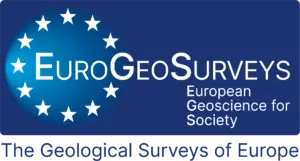What is the difference between EGDI and EPOS
It can be confusing that there are presumably two infrastructures for geological data in Europe: EGDI and EPOS. But they have very different functionality, contain different kinds of data, and serve different user groups.
- EGDI contains primarily geological data in a broad sense (basic geology, mineral resources, geoenergy, groundwater, geochemistry, geohazards, urban geology, etc.). In many cases, these are harmonised, pan-European datasets. EGDI also contains reports and other documents from geological projects.
- EPOS gives access to research infrastructures for solid earth sciences, for instance, seismological, near fault, vulcanological observatories, GNSS and satellite data, geomagnetic observations, and multiscale laboratories. A limited number of data layers from EGDI are also accessible on EPOS, including a surface geological map, index information about boreholes and mines, and index information about 3D geological models.


